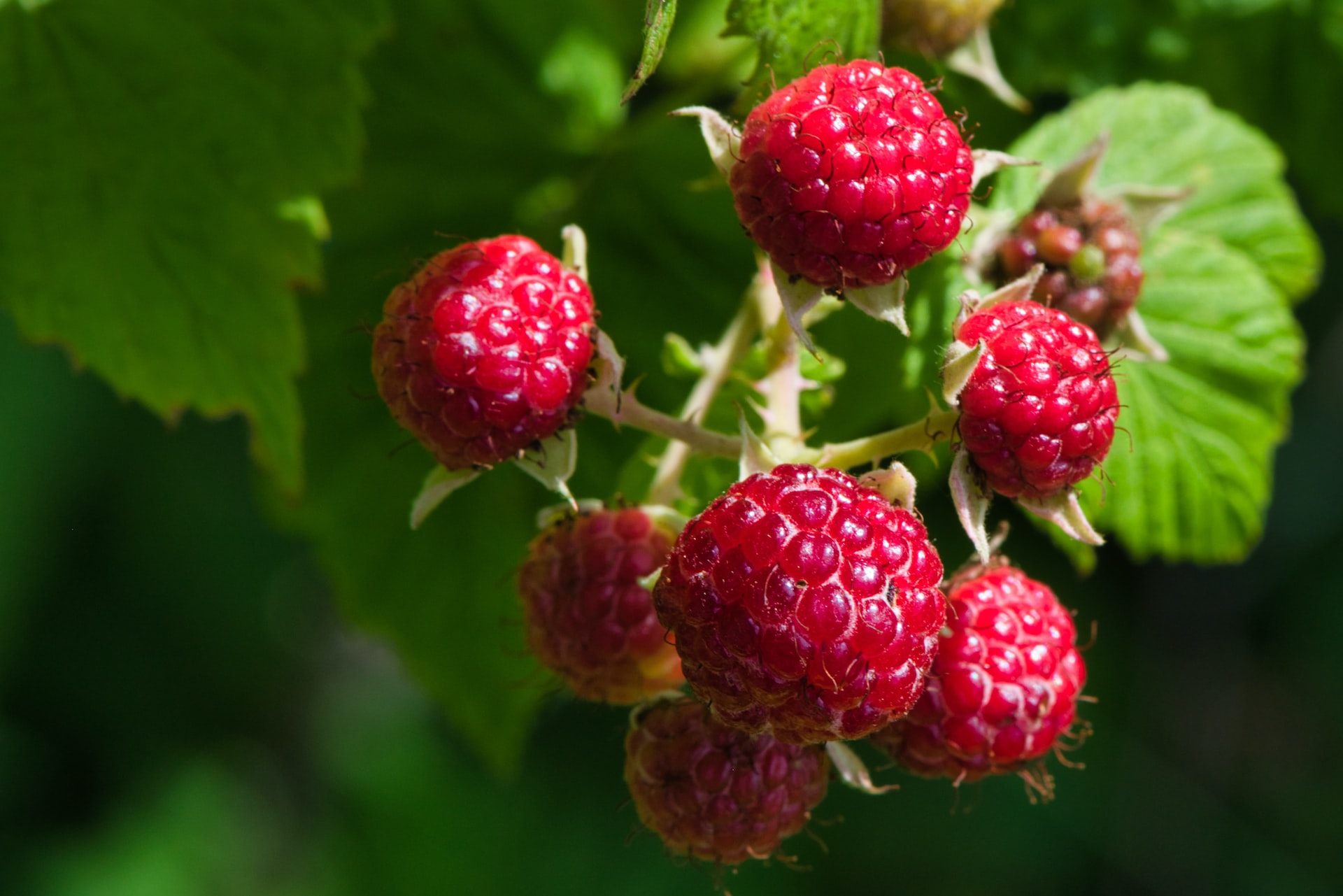The Delicious and Nutritious World of Raspberries: Types, Nutritional Value, and Fun Facts

Raspberries are a type of fruit that belongs to the genus Rubus in the rose family (Rosaceae). They are native to the temperate regions of the Northern Hemisphere and are widely cultivated for their sweet, juicy fruit. Raspberries come in several colors, including red, black, yellow, and purple, and have a unique, slightly tart flavor.
Nutritional Value of Raspberries
Raspberries are a good source of antioxidants, vitamins, and minerals. They are particularly high in vitamin C and fiber, and are low in calories and fat, making them a healthy choice for those trying to watch their weight.
One cup of raspberries contains about:
- 64 calories
- 1 gram of protein
- 1 gram of fat
- 15 grams of carbohydrates
- 8 grams of fiber
- 8 grams of sugar
Types of Raspberries
There are two main types of raspberries: summer-bearing and fall-bearing.
Summer-bearing raspberries produce fruit on canes that grew the previous year and typically produce one large crop in the summer.
Fall-bearing raspberries produce fruit on canes that grew the current year and produce two smaller crops, one in the summer and one in the fall.
Growing Raspberries
- Raspberries are relatively easy to grow and can be grown in a variety of climates and soil types.
- They prefer well-draining soil that is rich in organic matter and should be watered consistently to ensure healthy growth.
- It is also important to provide proper support for the canes, as raspberries can be prone to collapsing.
Raspberries can be grown using a variety of methods, including:
- Traditional in-ground planting
- Raised beds
- Containers
- Trellis system
Raspberries are susceptible to pests and diseases, such as raspberry beetle and raspberry cane blight.
To prevent these issues, it is important to use appropriate pest control measures and to practice good crop management techniques, including:
- Using organic or chemical pesticides
- Rotating crops
- Removing and destroying infected plants
Uses for Raspberries
- Raspberries can be eaten fresh or used in a variety of dishes, such as pies, tarts, jams, and smoothies.
- They are a popular choice for home gardeners and commercial farmers alike and are enjoyed by people all around the world.
- Raspberries can also be frozen or dried for later use.
- Fun Facts About Raspberries
- Raspberries are believed to have originated in Asia and Europe and have been cultivated for thousands of years.
- The word “raspberry” comes from the Old English term “raspberie,” which means “a berry that is rough to the touch.”
- Raspberries are a popular choice for homemade jam, as they are high in pectin, a natural thickening agent.
- Raspberries are a good source of ellagitannins, a type of antioxidant that has been shown to have anti-inflammatory and anti-cancer properties.
- In the Middle Ages, raspberries were thought to have medicinal properties and were used to treat a variety
- Raspberries are a popular choice for homemade jam, as they are high in pectin, a natural thickening agent.
- Raspberries are a good source of ellagitannins, a type of antioxidant that has been shown to have anti-inflammatory and anti-cancer properties.
- In the Middle Ages, raspberries were thought to have medicinal properties and were used to treat a variety of ailments, including fever and digestive issues.
- Raspberries are a symbol of kindness and generosity in many cultures and are often given as gifts to show appreciation and affection.
- Raspberries are often used in cosmetics and skincare products, due to their antioxidant and anti-aging properties.
- Raspberries are a popular choice for desserts and pastries and can be enjoyed in a variety of sweet treats, such as cakes, ice cream, and cheesecake.
- Raspberries are a good source of manganese, a mineral that is important for bone health and metabolism.
- Raspberries are versatile fruit that can be used in both sweet and savory dishes and can be paired with a variety of ingredients, such as chocolate, cream, and herbs.
- Raspberries are a popular choice for home gardeners, as they are relatively easy to grow and can add a burst of flavor and nutrition to any home garden.
To summarize, raspberries are a delicious and nutritious type of fruit that belongs to the genus Rubus in the rose family (Rosaceae). They are native to the temperate regions of the Northern Hemisphere and are widely cultivated for their sweet, juicy fruit. Raspberries come in several colors, including red, black, yellow, and purple, and have a unique, slightly tart flavor.








